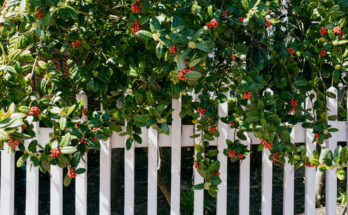Popular Garden Vegetables That You Should Avoid Growing From Seed
We may receive a commission on purchases made from links.
Your vegetable garden was off to a good start. You carefully planned out what you’ll plant where and done just that, you’ve pulled weeds, fed the soil, and put down fresh mulch. But something isn’t going right. A bunch of the seeds you diligently sowed aren’t sprouting. You wonder to yourself: Maybe you’ve planted the seeds too deep? Maybe they were stored improperly? In fact, it turns out that for particularly popular garden vegetables, attempting to grow them from seed is a recipe for a lackluster at best, non-existent at worst harvest.
Many plants in the allium family grow best from bulbs rather than seeds, and the most popular among them, onions and garlic, are no exception. Potatoes and their sugary lookalikes (though they’re not related), sweet potatoes, start from sprouting seed tubers. You may have even seen that happen in your storage cupboard. Perennial vegetable asparagus is most often started from root crowns.
Growing from seed often takes longer than growing from a tuber or bulb. In the case of garlic, expect to add a full year to your harvest time. For asparagus grown from seed versus crown, you should also add a year. Another reason people might not grow from seeds is because some plants don’t grow true to type from seed. What that means is they don’t have the attributes of their parents. For example, potatoes grown from seed — yes, potatoes have the ability to produce fruit with seeds — usually don’t produce as well as the parent plant. So, if you’ve struggled with germinating seeds in the past, give these kitchen staple vegetables that don’t need seeds to get growing a try.
Growing garlic cloves means a quicker time to harvest
New garlic (Allium sativum) plants are grown from bulbs full of numerous sprouting cloves. Gardeners planting garlic for the first time may find it confusing because these plantable cloves are often referred to as garlic seed. Make no mistake — the garlic cloves you plant look just like the garlic bulbs you crush to add into soup or slice for stir fries. There are two types of garlic, hardneck and softneck, with cultivars within each type suited to specific hardiness zones and climates. While garlic cloves bought at the supermarket will technically sprout if you bury them in the ground at the right time of year (and sometimes even sitting in that forgotten corner of your pantry), they’re possibly imported from other states or even overseas and may not be well suited to your local climate.
Instead, ask around nearby family, friends, and neighbors who you know grow garlic regularly for seed cloves. Seed savings groups — look out for National Seed Swap Day events in your area in January — and local organic growers are another good source. Forage or buy the biggest, firmest, and most blemish-free seed cloves you can find to ensure large harvestable heads. A 6-pack of Extra Large Heirloom Hardneck Music Seed Garlic Bulbs for Planting costs about $21. Keep bulbs intact until you’re ready to plant the cloves in the ground. Plant the cloves in the fall, from Halloween to Thanksgiving, for harvest in the summer. You can also grow new garlic plants from bulbils, tiny cloves that form on mature scapes, but it will take two years to see a harvest.
Put your onions sets, not onion seeds, in the soil in spring
Like garlic, gardeners in the know grow new onion plants (Allium cepa) from whole individual bulbs called onion sets or bulb onions, which are quite literally tiny, immature onions. Sets are saved from the previous year’s crop of onions and separated into large and small sets — the former turn into onions and the latter are grown for the leaves. You could even plant kitchen scrap onion hearts and they’ll sprout; while free, it’s not considered the most successful way to get a good harvest.
Onions technically can be grown from seed, and it’s even possible they won’t flower as much as bulb-started plants (something you don’t want if you’re aiming for harvestable onions). However, seed-grown onions may be more susceptible to disease and you need to get those seeds in the ground quickly — as soon as the soil becomes workable again after winter. Cold climate gardeners will find more success with sets over seeds, too. As with everything gardening, experiment with both ways of planting onions to see which works best for you.
If you’re a first time onion grower, you won’t have sets saved from last year’s harvest. You can affordably purchase sets from a local nursery or order online. A box of over 60 Stargazer Perennials Red, White, Yellow Home Garden Assortment Non-GMO Onion Sets costs about $10. Put your onion sets in the ground in early spring to April. The plants need all-day sunlight to form bulbs worthy of your kitchen, so choose the sunniest garden bed in your backyard to plant your sets in.
Plant seed potatoes rather than potato seeds for greater success
Potatoes (Solanum tuberosum) do produce seed-filled fruit that resembles that of other plants in the nightshade family like tomatoes and eggplant, but it’s poisonous. This seed is not, however, what home gardeners nor farmers typically plant to produce a potato crop that will provide a good harvest. Instead, they plant seed potatoes, which, despite their confusing moniker, aren’t actually seeds — they’re a carefully selected version of the potato tubers you might find in your root vegetable cupboard in the kitchen. You can plant a whole seed potato in the ground, but more often, gardeners cut them into pieces, each with a sprouting eye. This works because, unlike other root vegetables, a potato is a kind of food storage center for the plant above instead of a modified root.
Seed potatoes are typically sold in pound-weight lots starting in early spring by certified growers, seed distributors, and garden centers on or offline. Get a 2 pound bag of classic TomorrowSeeds Russet Burbank Seed Potatoes for about $17, or grow a color-filled crop with a 5 pound bag of Northshire Seed Farms Certified Non GMO Red Pontiac, Golden Yukons and Purple Majesty Simply Seed Potato Mix for about $14. Planting potatoes you get at the store or even your own saved tubers is ill-advised. They will grow, but may also introduce diseases into your beds or grow very slowly; grocery potatoes are often treated with sprout-inhibiting chemicals. Once you’ve acquired your preferred variety, top tips on how to start your seed potatoes include chitting, or sprouting, indoors before planting them deep into the soil outside.
Growing sweet potatoes slips from sprouting roots is savvy gardening
Sweet potatoes (Ipomoea batatas) and potatoes might look similar, but they’re actually from completely different families — morning glory versus nightshade, respectively. How you grow them differs, too. As a home gardener, you’ll most likely plant your plot of sweet potatoes using slips (also sometimes called transplants), which are essentially cuttings taken from sweet potato roots or vines. If you’re looking to grow a particularly large crop, save your money and buy seed sweet potatoes to grow your own slips from, starting in mid-March each year. To get the most slips from each seed potato, pre-sprout them indoors in water or soil at no less than 75 degrees Fahrenheit and 90 percent relative humidity. Slips best for planting will have about 5 leaves and abundant roots.
Local garden centers and seed catalogs will have the best advice on which sweet potato varieties do best in your climate; buy your slips and seed potatoes from them. You can also shop for them online. Get 10 Caribbeangardenseed Short-Season Centennial Sweet Potato Slips for about $20; this orange-fleshed variety is resistant to wireworm and Fusarium internal cork. If you’re after some interest in the garden, a pack of 9 CZ Grain Store 3 Color (Purple, White, and Orange) Garden Mix Sweet Potato Slips for Planting costs about $30. Discard slips with signs of disease or insect damage. Sweet potatoes are native to warm parts of South America, so the slips will need frost protection if you plant them outside early in the season and possibly plastic coverings to increase the heat in temperate areas once they get growing.
Bury an asparagus bare root crown in soil instead of seeds
Asparagus (Asparagus officinalis) is a perennial vegetable that takes a few years to provide a harvest; once it’s established, it offers up delicious, abundant spears annually for a decade or more. While the plant can be grown from seed (or seedlings), most home gardeners prefer to put bare root crowns into their beds. Don’t be put off by the fact that said crowns resemble a bunch of dead sticks; they’re actually the rhizomatic root system of a one year old asparagus plant. The crowns are where the plant stores all the vital energy it collects using leafy ferns that sprout from spears left unharvested. They have distinctive benefits over growing asparagus plants from seed: they can be planted deeper, leading to longer spears; they rarely suffer from transplant shock, and the resulting plant matures faster. Choose asparagus bare root crowns that have no fewer than eight thick roots topped by a dense, rot-free bud cluster.
As with the other non-seed-grown vegetables in this list, buy your asparagus crowns from a reputable local garden center or seed catalog. There are a few varieties to choose from, and going local will help ensure you get the best cultivar for your growing conditions. Alternatively, if you’re confident in your research, save money buying online. A Hand Picked Nursery Mary Washington, Purple Passion, Jersey Knight Bare Root Asparagus Garden Variety Pack will get you 10 of each cultivar (30 plants in total) to experiment with for $44. The best time to plant asparagus for a delicious harvest is in the spring, but fall is acceptable, too.



